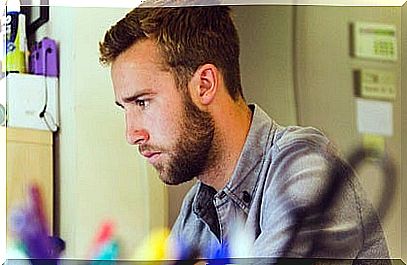Going Back To Work After A Depression, How To Do It?

Returning to work after a depression may not be an easy step. Not only is it difficult to comply with routines and schedules again, there is also the risk of a relapse and even the weight of social stigma. Whether we like it or not, there are still those who do not understand this type of psychological conditions and, far from being of help or support, it makes it difficult to return to the world of work.
When we talk about depression, stress or anxiety disorders, it is not common that we find information on how to return to our lives after having been on sick leave. It is undoubtedly an issue as important as it is decisive since in many cases it will determine the complete recovery or the risk of relapses.
The fears that inhabit the mind of the person who has been sick for five, six months or a year can be multiple and often make this return difficult. The feeling of disconnection, doubts about one’s skills, the fear of being judged or even the anguish of losing one’s job permanently are obstacles that complicate the return to work a little more.
Now, in most cases, recovering a routine, having social contact and integrating into work dynamics serve as an impetus to rescue motivation and the feeling of efficiency. As long as the person makes a suitable transition and has the adequate support from their environment, this return can be a complete success. However, we are going to list some strategies.

Returning to work after a depression: 5 keys to achieve it
Returning to work after a depression is challenging. Let us think that a depression, with the consequences that derive, does not end when the doctor discharges us, but when we return to being functional. Thus, this return to functionality requires many steps that are not always simple.
Prolonged casualties make return much more difficult
A first aspect that we must take into account when returning to work after a depression is the duration of the patient’s sick leave. It is not the same to have been absent for a month as for a year. Thus, sick leave due to depression are usually extensive, lasting between 6 months or a year. As a rule we can say that the longer the leave, the more likely there are complications in the return.
Another factor that we must take into account is that there will be cases in which the company directly opts for dismissal. Therefore, in these situations the person will have to face another type of reality, which is none other than that of starting the search for a new job.
Work on thoughts, ideas and attitudes
Prolonged leave often fuels certain fears and concerns in people when returning to work. The most common are the following:
- Fear of not being competent and effective at work.
- Fear of being fired for not being as productive as others.
- Feeling disconnected from the work environment.
- Fear of being exhausted, feeling discouraged and not being able to complete the entire work day.
- Fear of being judged or observed.
These and other ideas should be worked out with the psychologist. The best thing, if possible, is that the return is gradual, so that the person can gain confidence. In addition, it is also advisable to leave a short transition time to work on these types of ideas and attitudes so that the reincorporation is more positive.

Recover routines, organize schedules, contact colleagues
Returning to work after a depression implies, first of all, recovering routines. In this way, something very positive for the person will be to work on the following dimensions:
- Days before the reinstatement we will begin to take care of our schedules. We will go to sleep early and set the alarm for the time we should get up.
- We will organize our tasks, manage priorities in order to prepare for the day of our reinstatement.
- We can also meet with our co-workers to notify them of our return. In this way, we also get an idea of what we are going to find at work, keeping us up to date with the most important changes.
The best progressive return, let’s avoid full days
We are aware that this formula is not always possible. However, it is advisable when returning to work after a depression that the return be progressive. That is, the ideal is to start with a half day.
In addition, it is highly positive to have a support circle in the work environment itself, that is, there are professionals specialized in psychology in the company to facilitate this incorporation.

Activities to avoid relapse
Beyond the work environment, it is necessary for people to carry out various activities to avoid relapses of their depression. Thus, it is known, for example, that the practice of Mindfulness is very appropriate in these cases, as revealed by a study carried out by doctors Stefan Hofmann and Alice Sawyer, from the University of California.
On the other hand, having a hobby, having a good social network in which to support ourselves and doing some sport are beneficial incentives that feed motivation and take us away from that negative state of mind that leads to depression.
To conclude, if coping with depression is in itself a highly complex psychological craft, so is returning to work after a long-term absence. However, this pass, on the way back, can also be climbed.









